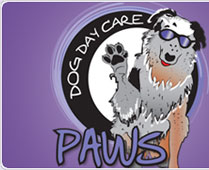Commercial Grade Hydraulic Tables

Commercial Grade Hydraulic Tables
Commercial grade hydraulic grooming tables are built to last, offer the most stability and allow the user to groom virtually any size or type of dog safely. Most are constructed of solid steel, with a heavy wide base and have a much larger hydraulic cylinder than those found on lighter weight tables. Typically these tables are rated to hold around 250 lbs which will far exceed the weight of 99% of the dogs that will be on it. As can be expected once you enter this category of grooming table the price jumps fairly substantially to between $500 and $1500 for most tables there are some exceptions with tables costing in excess of $2500 for all stainless steel varieties, but a typical grooming shop would have no practical need for such a table.
There are, however, various styles available and even at this level of apparent quality, a potential buyer should exercise caution and carefully examine the specifications of a potential grooming table as some are considerably better than others. In trying to decide upon a grooming table the most important feature is going to be physical dimensions of the table top. Pictures both online and in brochures can be quite deceiving, what may appear to be a large table top with a 65 lbs Australian Shepherd on it being groomed in the advertisement may actually be a small to medium table top with a 15 lb Miniature Aussie on it being groomed; deceptive yes, illegal to advertise in this fashion, no. So it is important that the potential purchaser find the actual posted table top dimensions. As a rule of thumb if the intent is to be able to groom virtually any size or breed of dog, then it is recommended that the table top be no less than 24 inches wide by 36 inches long. Tables with a top this size will allow the groomer to groom everything from teacup sized dogs like Yorkshire Terriers and Chihuahuas up to massive dogs like the Great Pyrenees and Newfoundland.
Other things that should be examined are the overall look and feel of the table in terms of robustness. Is the metal used actually steel or some cheaper alloy? what gauge of metal is listed as being used in the construction of the table? This is somewhat counter intuitive as the lower the gauge number listed the thicker the metal, i.e. a table made with 14 gauge steel will be less structurally sound than an identical table built with 10 gauge steel; the latter, however, will be heavier due to the thicker material. How is the table top constructed? Is it plywood with a thin no slip rubber mat laminated to it or is it made of steel with a non skid epoxy coating. The epoxy top is the best choice as at some point the rubber mat will begin to delaminate around the corners. This is typically due to the fact that wood is in general is a poor choice for a table top as water dogs, urine, etc. will begin to effect it causing the top to warp, expand or otherwise deform. How is the table top connect to the frame? Is it welded to the frame, or held with numerous solid nuts and bolts or does it look as though connecting the table top was an afterthought by the manufacturer. Does the table come with adjustable levelers to level out the table in its permanent location to keep it sturdy and prevent it from tipping? Does it come with casters in the event that the table needs to be moved frequently and if so how are those constructed? Cheap plastic? Are the moving parts of the casters tightly sealed to prevent dog hair from tangling in the moving parts rendering them inoperable? Can the caster be dissembled and cleaned out in the event that hair does tangle inside of them?
Where is the fulcrum between the table frame and table top? In other words is the table top or upper portion of the table look as though it is connected to base at one end or does the table top appear to set centered on the frame? What features does the table have? is the grooming arm adjustable and a part of the table or does it need to be purchased separately and clamped to the table? Does the table come with drawers, or holes drilled in the top for the groomers scissors and other small tools? How much travel does the table have? I would recommend a minimum of 15 inches of travel from the lowest point to the highest, preferably in the neighborhood of 20 inches. What is the lowest and highest setting of the table? At a minimum a good table should be able to lower the top to around 20 inches from the ground and lift it to around 40 inches. This will allow most larger dogs to step up on the table while it is lowered and allows the groomer to lift smaller dogs to a convenient working height. Ideally I would like the table to go a bit lower as some larger dogs must have their front paws placed on the table and their rear hoisted on the table even at its lowest setting. This is due to the fact that the hydraulic piston used to lift the table can only collapse so far (think of a cylindrical car jack). These are all questions that you should know the answer to prior to purchasing a grooming table for your business.
The images provided below show examples of the various tables within this category, I have listed them in pairs from top to bottom and left to right in my opinion of best to worst. I will also provide a brief review of each type

(Figure A vs. Figure B).
I would opt for figure A. as a table top centered over the frame without any type of excessive overhang in one direction will tend to be more stable. When I see Figure B. I envision a diving platform, though I do prefer the flat table top and clearly defined and usable table edge. Although both are at the top of tier in durability and quality of materials, Figure A. has a shorter more compact and sturdy lifting mechanism than does Figure B. Additionally Figure B has to long dog ears protruding from the top of the frame (under the table top) where the top of the hydraulic piston connects to the frame. This would seem to me to be something the groomer could bump her knees on, or a good place to get your clipper wires caught walking around the table, or a good place for a leash to get hung when a dog being led to the table decides to bolt around it in a bid for escape. Personally I like to see as few hang points and protrusions as possible. Additionally I appreciate the fact that Figure A uses metal over the bottom of the frame to create a cover or hood. This prevents dog hair from landing and piling up between the two lower frame rails making cleaning easier. It is also adds rigidity and weight to the base increasing the overall stability of the table.
Lastly I somewhat like the fact that Figure A comes with an attached swing arm frame that rotates 180 degrees and that can be attached to either end of the table. This allows the groomer to rotate the grooming arm out of the way when working on the animals face instead of having to try and turn the dog or work around the grooming arm. I say somewhat (more on this later) for the fact that the rotating arm cannot be locked into place. The man disadvantage to Figure A is that the table top is not only an odd thickness, but also does not possess a solid edge. Whereas the vast majority of table tops are around 3/4 of an inch thick with solid edge, Figure A is around one and a half inches thick and the edge consists of folded over sheet metal with a small lip at the bottom. Basically if you where to do a cut away, the edge of the table would be an inward facing ‘L’. Since 99% of all other grooming tables consist of a flat deck, all of the accessories you find are designed to work with them and not this table. As a result I have not found a bolt on grooming arm or useful accessory (Groomers Helper—more on this later) that will properly fit the lip of this table without modification to the tool or the table or both. Other than than any noted short comings both (Figure A & Figure B) are heavy and stable tables, both weighing around 115 lbs which provides plenty of ballast to keep the tables from wobbling or tipping. In price both are similar and can be picked up in 2014 for around $700, which is a value when one views the myriad of hydraulic grooming tables available, many of which are of lower quality while being more expensive.

(Figure C vs. Figure D)
While both of these would be considered decent quality tables, based upon the fact that these tables have thinner frames and are constructed of lighter duty material than either Figure A. or Figure B that they are not as durable. Oddly enough price does not usually reflect this and in many cases a lower quality grooming table may in fact cost more. If given the choice of these two tables based upon the images I have available I would very narrowly opt for Figure C solely because it appears simpler in design and again has a closed or covered lower frame. Additionally the piston seems to be positioned more towards center which would reduce stress on the pivot points. Figure D, does boast a unique feature and a throwback feature to the barber style or pedestal grooming tables in that the top is advertised to rotate 360 degrees. The red flag for me is that this is but one more moving part to break. Additionally this feature is really only useful for smaller dogs as if you were to try and rotate a table top while a large dog was on it and it became spooked and tried to jump catastrophe would follow. As to the table tops, Figure C appears to be wood with a rubber mat on top, as evidenced by the metal banding around the edge of the table. Figure D appears to have either a wood or composite top with a no skid matt glued to the top which if it were composite would make it the better top. Figure D appears to have a wider base which would tend to give the opinion that it would be more stable, however, the top rotates and I would imagine that if the top were rotated so as it were perpendicular to the base (forming when viewed from above the image of a plus sign) that stability would become an issue especially with larger dogs. Additionally the locking mechanism for rotating table top is not evident either in the image or in the manufacturers sales literature. Meaning I am unsure how the top is locked into a position or if it is even lockable at all (which I would have to assume it is). Regardless I am unwilling to take a $930 risk on a table only to find out it does lock or the locking mechanism is two position only or mounted under the top where it could get tangled in cords etc. Especially in light of the fact that Figure C can be purchased for $300 less.

(Figure E vs. Figure F)
While neither would be my preference, I would very narrowly opt for Figure E as I could see it being useful in a smaller boutique style grooming shop specializing more in the small dog. Also the base seems smaller than the table in Figure F the top looks as though it has been sized down accordingly to create an overall balanced and stable working platform. When viewing Figure E it appears as though that while the base is larger the table top is connected to the frame off center again I am thinking diving platform or stress on the top to frame connection. It is not uncommon for a groomer to sit on the end of a table facing away from a dog while pinning a dogs foot between their body and arm in order to clip its nails. The vision of a groomer sitting on the end of this table doing that in order to complete the job just seems to scream unsafe. Additionally if we examine the frame Figure E has extra bracing attached whereas Figure F is lacking in this department. In light of the fact that Figure F is likely a larger table and the table is off set of the frame I think that extra bracing is a no brainer. In looking at the tops, Figure E appears to lose out as the top is wood with a rubber mat, whereas Figure F appears to be composite or steel and considerably thicker. If in fact the Figure F is sporting a solid steel top welded to the frame then maybe I would choose it over Figure E for a larger shop, maybe. In all honestly considering the price of the two tables in this tier when compared to Figures A and B, I can see no reason to purchase either of these.

(Figure G and Figure H)
I have no preference for either and these are simply listed to provide an example of some of the other less common designs available in the category of commercial hydraulic grooming tables. Both appear well built and solid, although both are somewhat overpriced. As always I would go through the literature and find the most appropriately sized table based on my needs and best constructed table based on materials and design. This would then be balanced against price before making my decision on which to purchase.
.




